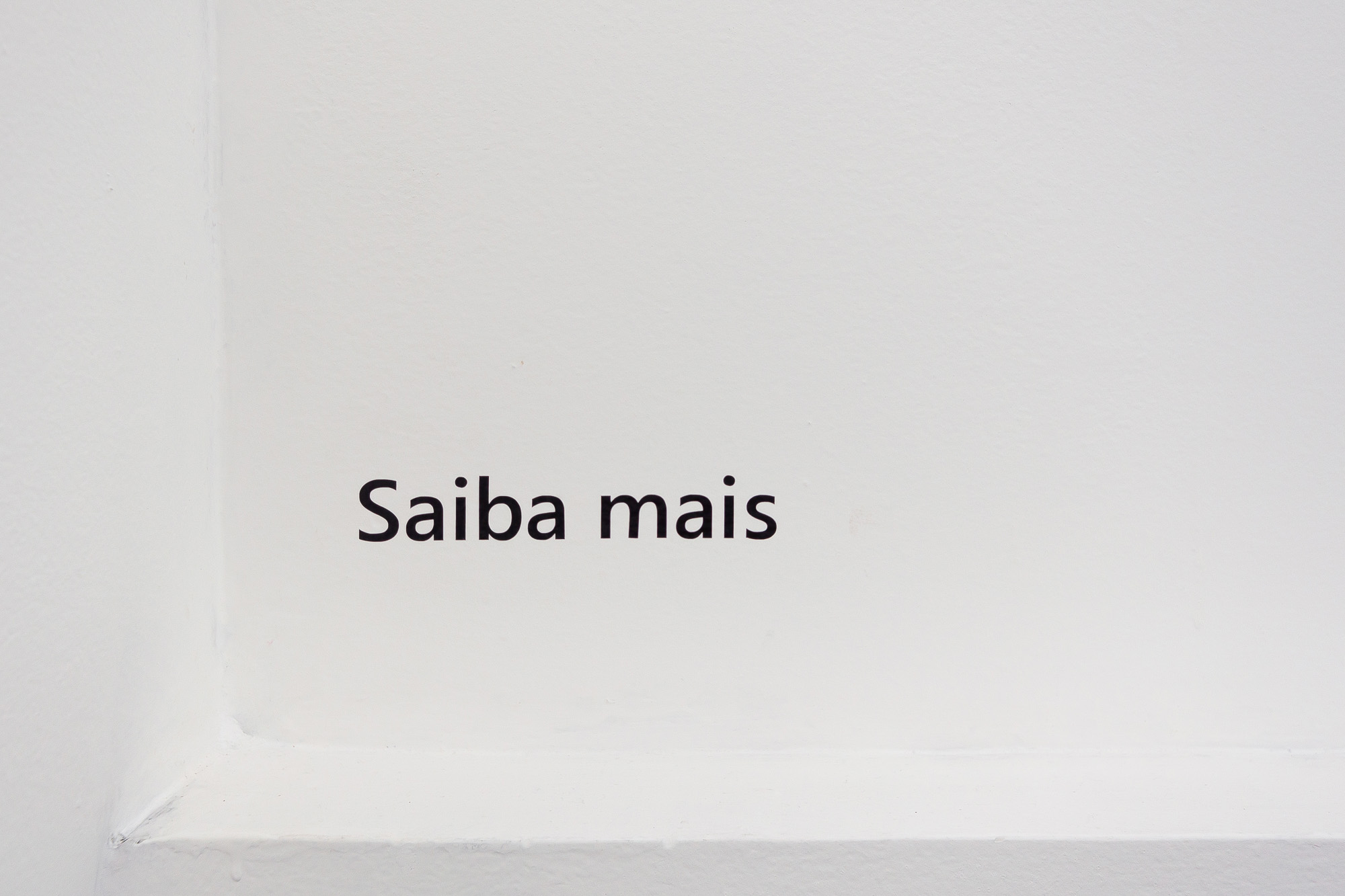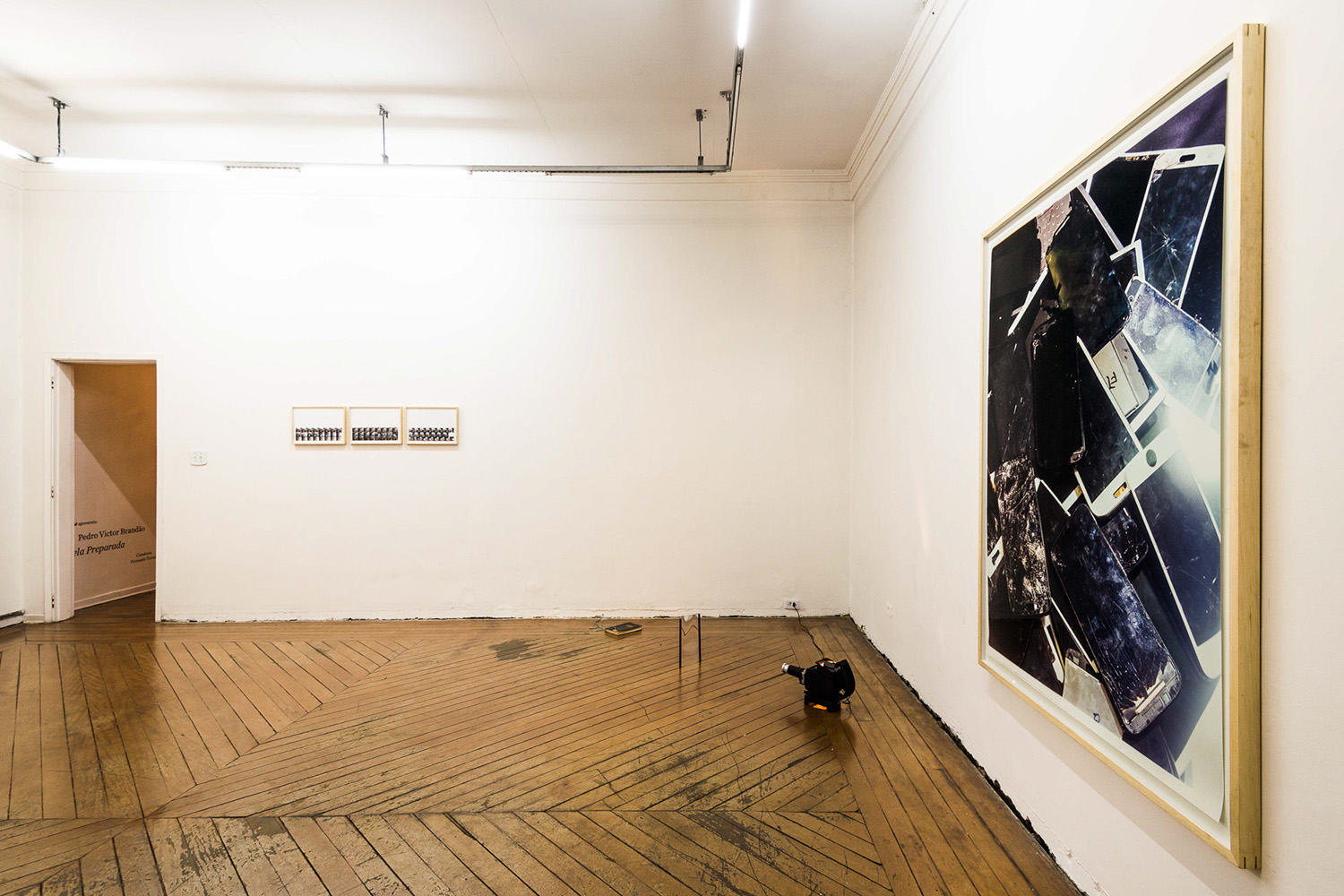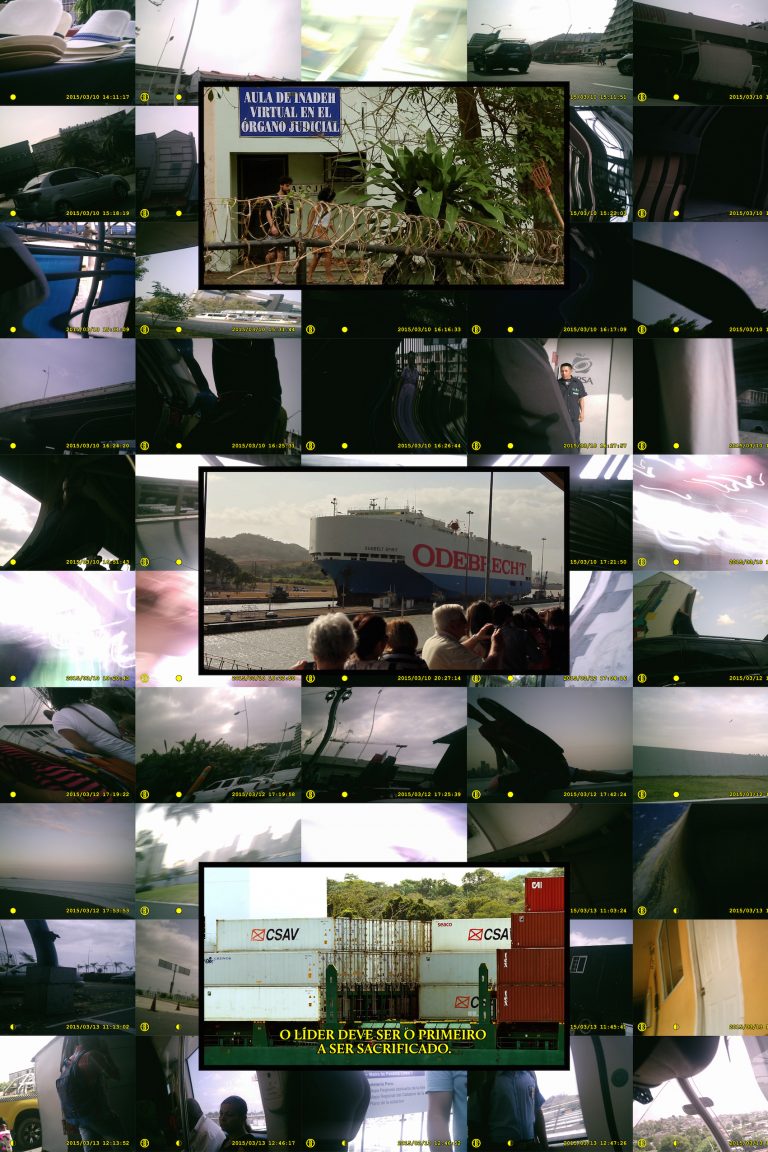Texts
Learn more – Natália Quinderé, 2023
Pedro has been rehearsing the construction of scatological narratives of cognitive capitalism. Sometimes money is the main character in his speculations; other times, it is the machine that drives the story. Faced with the sensations of tragedy, laughter, melancholy, and bankruptcy that Click on… can provoke, one of the founding repressions of colonial modernity remains to be pointed out: the accumulation of wealth. Accumulation, achieved with the labor of enslaved Indigenous and African peoples, extracting gold, silver, and other precious metals in peripheral countries like Brazil. Money doesn’t grow on trees. It doesn’t fall from the sky. Where does it come from? What is the cost? Who pays the price? How to make a lot of money? By working?
Photography with an edge – Interview to Wanda Oliver, 2022
I think that non-fungible tokens along with the idea of self-issuance is a medium for artistic and financial expression – that’s why I have called this field cryptomedia. It is not just a means of payment or a way of cutting out intermediaries, but a stack of socio-technical solutions with which it has been possible to implement, to varying degrees, the idea of “venture communism” put forth by the Telekommunisten collective since 2001. That is something that alters the perception of the value-forms of our time. I am interested in producing works that can only happen in this environment while embedding practices of redistribution, archiving and composability.
Digitizing the Analog Through Blockchain: Pedro Victor Brandão’s “Proofs of Work” Series – Interview on Ephimera Magazine (2021)
The fact of mixing old and new technologies also relates to previous works, a kind of multimedia storytelling. In some ways, the recent history of decentralized finance recalls the history of photography, which is also an invention made from natural laws.
To enter the school of value – Leonardo Araujo Beserra, 2019
It’s not to say that knowing how to manage money is equal to generating the necessary autonomy for self-management. It also doesn’t mean that we don’t need money. What’s said here is: there is an abstract world, completely encrypted, which has been erected for over twenty years in the cracks, rifts and basements of the internet. And that this world must be, first of all, understood, for it’s the foundation of the worlds to come, and only after understanding it will it be possible to dominate it, in the sense of using it with sufficient skill to generate other possible worlds.
Redistribute the Crisis – Interview to Marilia Loureiro, 2017
It all comes from a desire to achieve visual and critical repertoire from the realities I experience. This involves writing, reading and the need to put visuality into a check, a take on the corrupting role that the images bring. Overlaps occur at the technical and formal level, bringing some social alert. The problem I have posed is to try to make these moments of radical transparency work in favor of a permanent transformation of some structures. To disagree with the opulent uses of information is also to claim a space of opacity, wherein possibilities of interference, chaos, and subversion arise; a fracture through which another light gets in.
Prepared Screen – Fernando Ticoulat, 2016
Considering the multiple ways in which the Internet shapes our social and commercial relationships, Pedro Victor Brandão approaches with acute critical thinking the interfaces that mediates the vast universe of zeros and ones, bits and bytes of the virtual space. From our cell phone to the ATM machine, more than mere luminous devices, such interfaces (and what they reproduce) are the most symbolic form of our era. Far from being free of intentionality and consequences, these artifacts, although inanimate, create certain types of behaviors. Each tool offers its users a specific way of viewing the world and interacting with others, according to the values and aspirations – benign or malignant – deposited in them.
Speculations on the Fifth Income – Pedro Victor Brandão, 2016
The first axis, which generated the film-essay A oferta não equivale à procura [Supply does not equal demand], was the observation of some of Odebrecht’s works in Panama City. What most caught our attention was the Cinta Costera III, a bizarre maritime viaduct, which both cancels out the horizon line and threatens the status of the World Heritage Site of Casco Viejo, the historic centre of Panama City. Phases I, II and III of the construction have already been completed, but there is still a planned sequel phase IV.
[…]
The second axis, which led to the creation of the photographic series Cynthia nos vê de perto [Cynthia sees us closely], functions as a kind of counterpoint; a self-surveillance experiment, using a camera designed to photograph animals.
On exo-economics – Pedro Victor Brandão, 2016
What constitutes the ownership of exo-economic natural resources? What are the risks of outer-space missions for water, platinum, palladium, and other rare metals? Will these undertakings further academic research in the fields of cosmochemistry and mineralogy? Will they provide the means for a universal basic income? Or will the result simply be an interplanetary bank for a handful of investors?
New bussiness: art in search of alternative economic systems – Justine Ludwig, 2016
These projects open up a space for discussion and experimentation where we can imagine different manners of commodity exchange. They also pose the question, “How are works of art funded if they opt to work against established financial models?” The þit (2014) by Maíra das Neves and Pedro Victor Brandão used three cryptocurrency mines to create a self-funding model to run a communal park and its programming.
Soft Power or The Undelayable Will to Do Good – Agência Transitiva, 2015
2101 of the Pop era: it repeated itself. They ate the fruit. Nibbles of meat layers reach the thorny bone. That was when a curtain of inhumanity greater than the seas fell all over the world. The bear grabs the bull by its long tail. The weak base collapses the pyramid. The end of metal sovereignty, a new era of electrical storms will have begun. Millions of groundhogs will reveal an early spring through block chains, awakening the Entity from the deep.
Depois da Fonte [After the Fountain] – Maíra das Neves and Pedro Victor Brandão, 2014
Depois da Fonte proposes a new fountain for the gush of wealth. It also proposes another way to administrate collectively produced resources. Depois da Fonte blurs the boundaries between public and private and activates collaborative modes of production and financing, which are neither hierarchical nor speculative. Depois da Fonte does not dam. Rather, it distributes.
Combined with intense real estate speculation, current plans of urban development compromise people’s rights to the city and undermine the creation of common spaces. The artists’ work of mediating public, labor, and space offers a counterpoint to these plans. Depois da Fonte requalifies the function of art.
On Bitcoin – Maíra das Neves and Pedro Victor Brandão, 2014
Presented at during the implementation of the þit.Bitcoin (฿) is a technology and a currency based on distributed computing. It is decentralized, digital, and global. Bitcoins are created with no control by bank or states. They are traded online and can be spent...
“The legend of Thyth, the Giant” or “What lays underneath the þit” – Maíra das Neves and Pedro Victor Brandão, 2014
The young Förster knew of these plants. The Donnerbarte are the sempervivum and the Schlehe is that spiky little tree, known for that old time liquor. But he’d never heard that one day these plants were known for having special protection powers, or that they were found in many roofs. Superstition, so these texts must be really old, he thought. A second fragment:
“(…) and so, on this day I celebrate having found my new roof. For here I shall be distant of the eyes of men, of the eyes of power. Here I shall be free to live as I please, and carry on with my practice. The villa I lived in for the last fifty years is not safe anymore. I am already a very old woman so nobody minds me much, but now that that poor Anna Spiekermann has met her tragic death, I cannot risk being hunted too. Not long ago, men like these left corpses of rebels rotting in Münster’s cages, way up high, at everyone’s sight. No, I shall not be hunted! I see a curtain of inhumanity, bigger than the seas, which have fallen upon the entire world. Happy place now is only here where I shall now live, alone, with the plants that protect and heal me and my good friend, Geneviève.”
Deviations in the Landscape – Pedro Victor Brandão, 2012
This exhibition presents pictorial senses after alterations in the procedures of the photographic system, leading the view of the public to landscapes created in dilated times. There is the deviation of the domain of the visible from its objective aspect. The set of series points to questioning over permanence, selective urbanity, visibility, ramdomness, and the manipulable nature of today’s technical image. The works have been created between 2008 and 2012 and they are part of a major research about different processes of generation, construction, and understanding of images. The observations of the environment happen as a contiguous process and the use of photography and its devices build fields of signification between visuality and memory.
The Big Wave – Raphael Fonseca, 2011
We can read this work through the relation between art and politics. Pedro Victor could individually shoot banknotes stained by the “anti-theft liquid” present at some ATM’s. In an attempt to break the structure of the machine, usually with the use of explosives, a magenta coloured liquid is released, impregnating the money and, therefore, due to the recent determination of the Central Bank, transforming it into mere paper. The image of the object resultant of a crime is transformed into art. That which legally has no more financial value goes back to its initial state; elevated to art status, it is likely to have value again, but already within the art market. Adding to the irony of this image, the artist lets the audience take home, free of charge, a particle of the mosaic. These spectators become collectors and, due to lack of a daily reposition of these copies (signed and serialized in the verse), they can now speculate on the possible values for their small works of art.
forget, explode, signalize – Bernardo Mosqueira, 2010
Brandão makes explicit a frustrated struggle by the fossilization of time. It is, yet, the old fight of the man against his inevitable end. But the transformation strengthens! The institutional monument with all its conservative forces does not wins the life that runs. It is the liquens that tint the monumental gray created to eternize its ideological intentions of origin. It is the images that are “finite, much more than beautiful, will stay”.









![Depois da Fonte [After the Fountain] – Maíra das Neves and Pedro Victor Brandão, 2014](https://pedrovictor.com.br/wp-content/uploads/2023/08/DF_2014_002_web.jpg)

